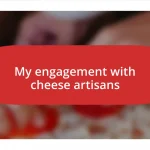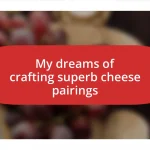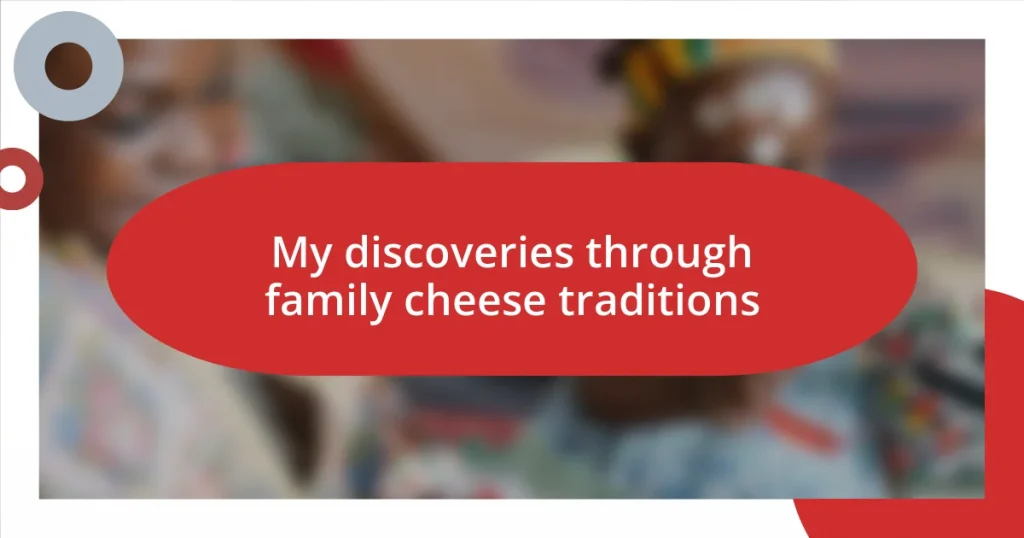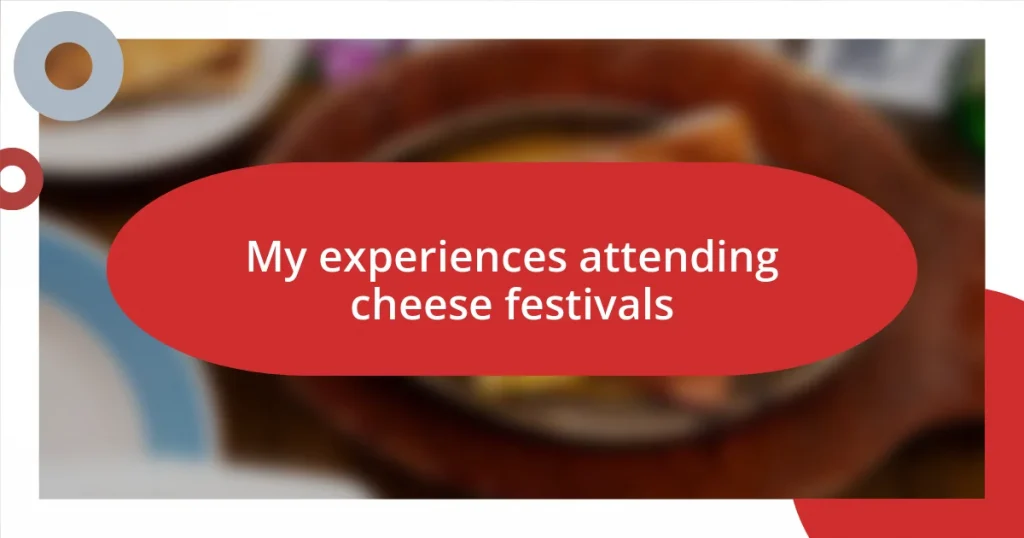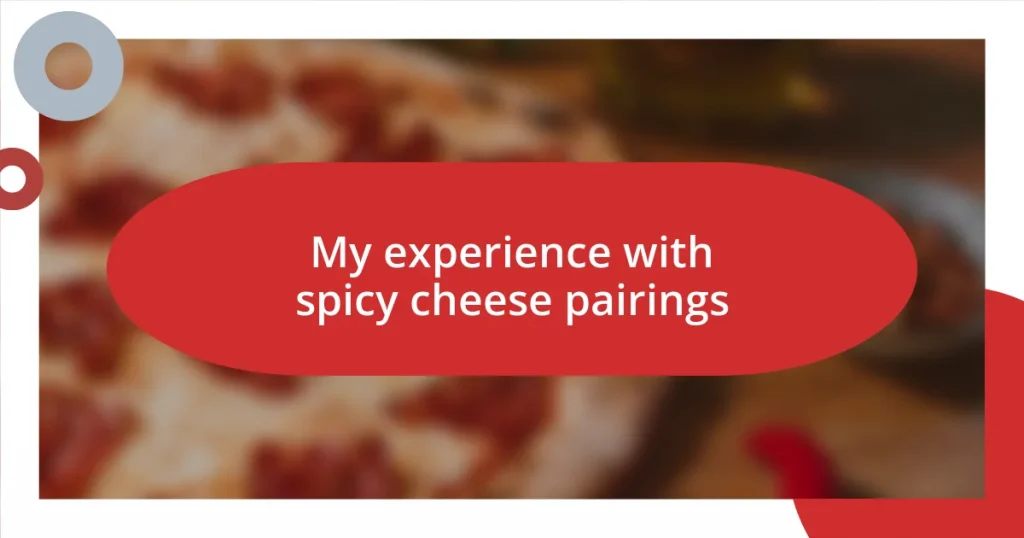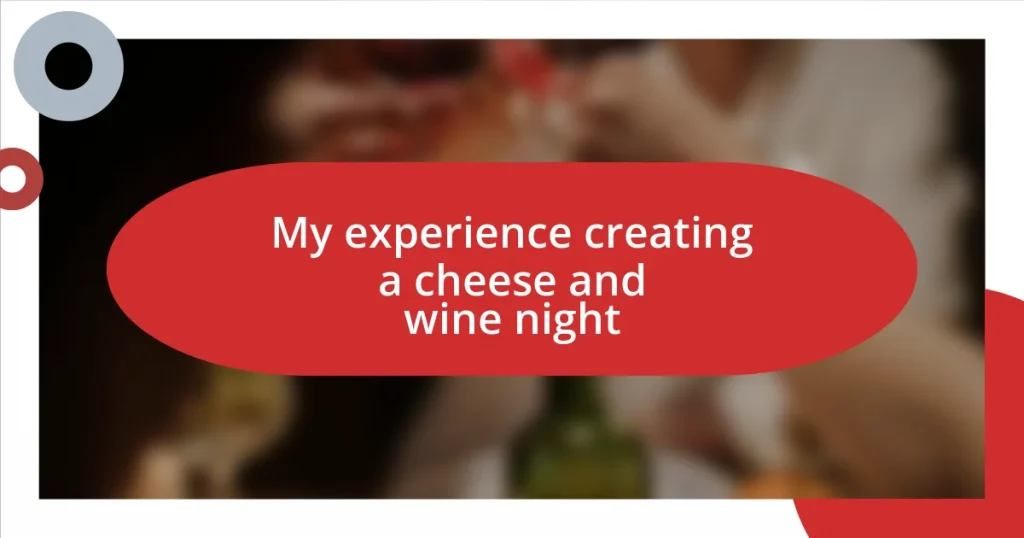Key takeaways:
- Cheese traditions connect families and cultures, often serving as a centerpiece for gatherings and storytelling.
- Family cheese recipes carry personal histories, evoking memories and preserving culinary legacies across generations.
- The process of cheese-making and aging involves patience and skill, transforming simple ingredients into meaningful culinary experiences.
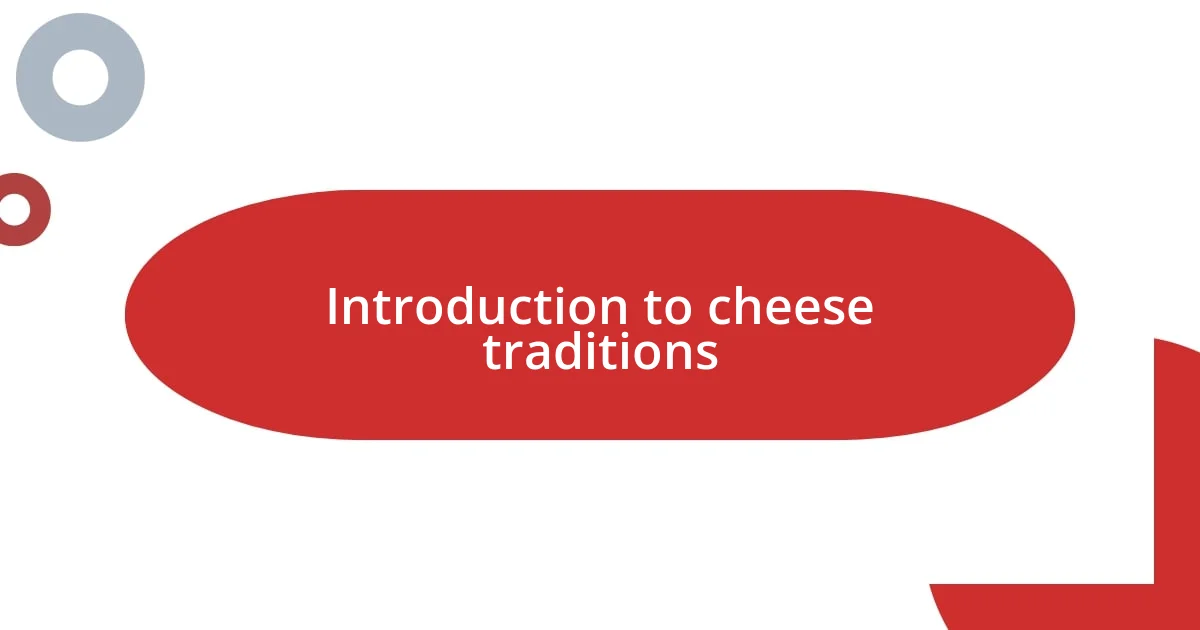
Introduction to cheese traditions
Cheese traditions are a beautiful tapestry woven into the fabric of many cultures worldwide. Growing up, I can fondly remember countless family gatherings centered around a cheese platter, which was always a highlight. Have you ever noticed how a simple cheese can spark stories and memories among loved ones?
In Italy, for instance, cheese-making is not just a craft; it’s a rite of passage. The way my grandfather would tell us tales of his family’s cheese recipes handed down for generations made me appreciate the depth and significance behind every bite. Isn’t it fascinating how these traditions connect people to their history and to each other?
Each cheese type carries its own legacy, different flavors reminiscent of the land they come from. I found myself pondering, what stories does your favorite cheese tell? For me, the sharpness of aged cheddar reminds me of cozy winter evenings spent with family, sharing laughs and tales over a warm meal. These traditions not only nourish our bodies but also our souls, creating a shared experience that binds us together.
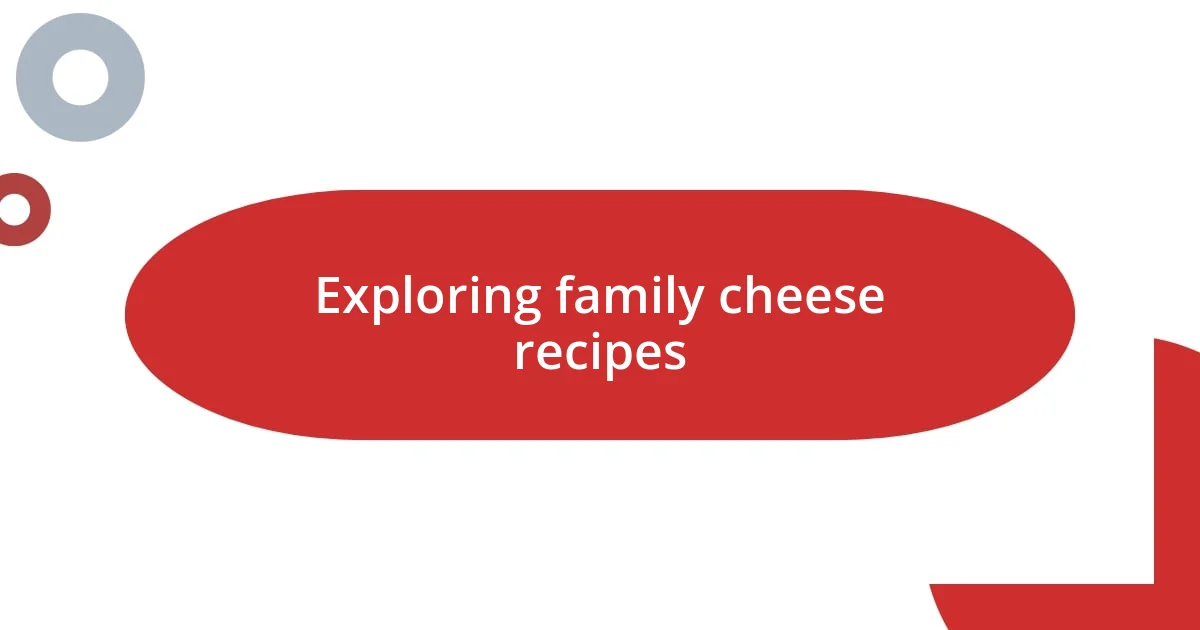
Exploring family cheese recipes
When diving into family cheese recipes, I’ve discovered that each recipe is steeped in personal history and cultural significance. My journey began with my grandmother’s legendary mac and cheese, a creamy delight that would always delight the family during gatherings. I can still picture her, wearing a flour-dusted apron, sharing stories of how she learned to make it from her mother—each stir of the pot infused with love and nostalgia.
Here are some cherished family cheese recipes that I’ve explored:
– Grandma’s Mac and Cheese: A creamy blend of cheddar and Gruyère, baked to perfection.
– Aunt Margaret’s Ricotta: Homemade from scratch, often served with a drizzle of honey and fresh fruit.
– Dad’s Blue Cheese Dressing: A tangy concoction that complements his famous salads, passed down from a childhood friend.
– Sister Sarah’s Cheese Board: A stunning array of local cheeses with unique pairings, showcasing our region’s flavor diversity.
Each recipe brings back warm memories of family gatherings, laughter, and heartfelt conversations around the dining table. These culinary treasures serve as a delicious reminder of where we come from and the bonds that hold us together.
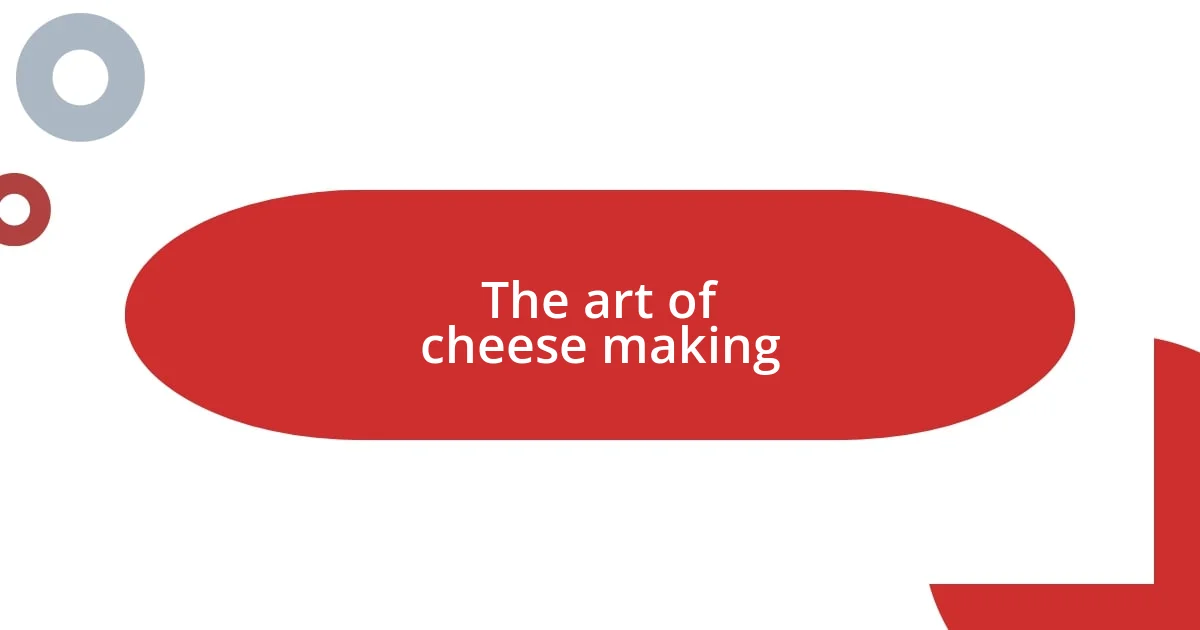
The art of cheese making
The cheese-making process is truly an art form that combines science with tradition. I vividly recall the first time I watched my uncle craft mozzarella—it was mesmerizing. He transformed simple ingredients into stretchy, creamy perfection right before my eyes, and every pull of that cheese brought back memories of our family’s past, celebrating milestones over shared dishes filled with homemade cheeses.
As I delved deeper into cheese-making, I discovered the importance of patience and precision. Each step, from curdling to pressing, plays a vital role in the final product. I remember my first attempt at making cheddar; it took hours and felt like a labor of love. The anticipation of tasting my creation was almost unbearable, and when I finally did, it was exhilarating to savor something I had made with my own hands.
Cheese represents so much more than just food; it embodies connection and craftsmanship. I often wonder how many other families share this experience of creating cheese together, forming lasting bonds over shared skills and recipes. Isn’t it wonderful that something as simple as cheese has the power to connect us to our loved ones and our cultural roots?
| Aspect | Traditional Cheese Making |
|---|---|
| Ingredients | Milk, rennet, starter cultures |
| Process Steps | Curdling, draining, pressing, aging |
| Key Message | Patience and precision lead to unique flavors |
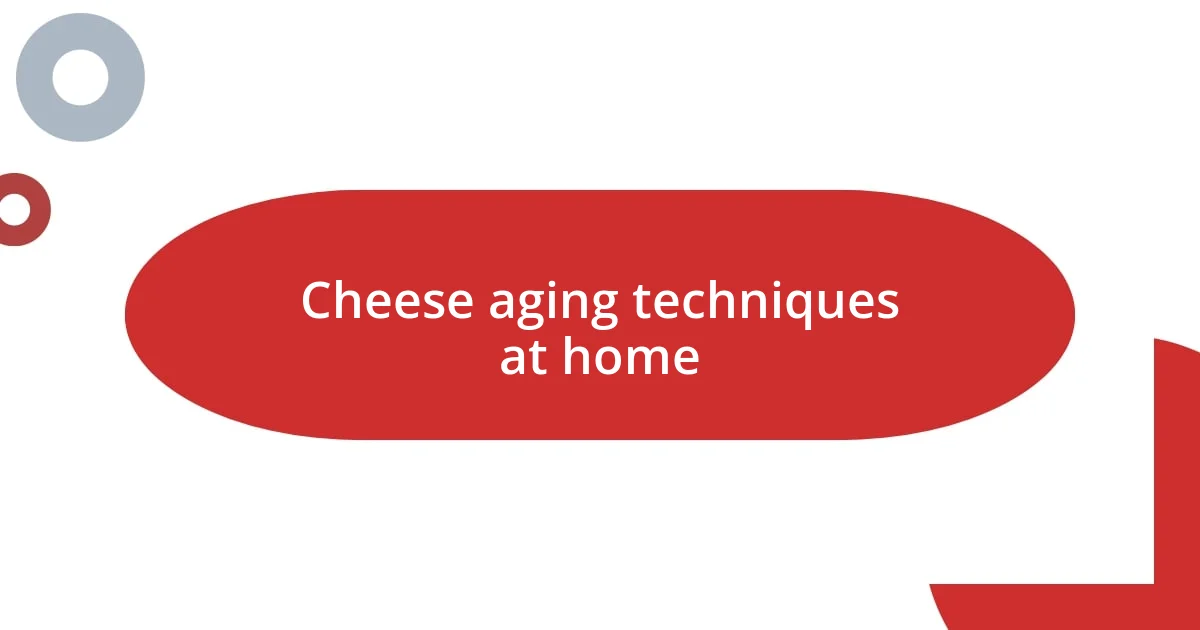
Cheese aging techniques at home
Aging cheese at home can feel like discovering a hidden treasure. I remember my first foray into this realm—an experiment with a simple cheddar. I stored it in a small cave-like spot in my fridge. The anticipation grew day by day, wondering how that raw block would transform over weeks into something utterly unique. The first bite after the aging period was pure joy; the flavor was sharper, the texture more complex. Isn’t it amazing how time can elevate something as basic as milk into a savory delight?
As I ventured further, I learned about the importance of temperature and humidity. Using an old refrigerator converted into a cheese cave was a game changer. Maintaining a steady environment was tricky; I vividly recall the anxiety I felt on colder days when the temperature fluctuated! Yet, through trial and error, I discovered that consistency is key. With each batch, I found myself more in tune with the aging process. It’s almost like developing a relationship with the cheese—watching it evolve and deepen in flavor, then sharing the results with friends and family.
While I’ve experimented with various cheeses, I often reflect on my first cheese aging experience. The mingled aromas and flavors sparked a newfound appreciation in me for the science behind aging. Each successful wheel of cheese became a celebration of patience and experimentation, reminding me that good things really do come to those who wait. Isn’t it a thrill to dive into the unknown, turning an ordinary routine into a delightful culinary adventure?
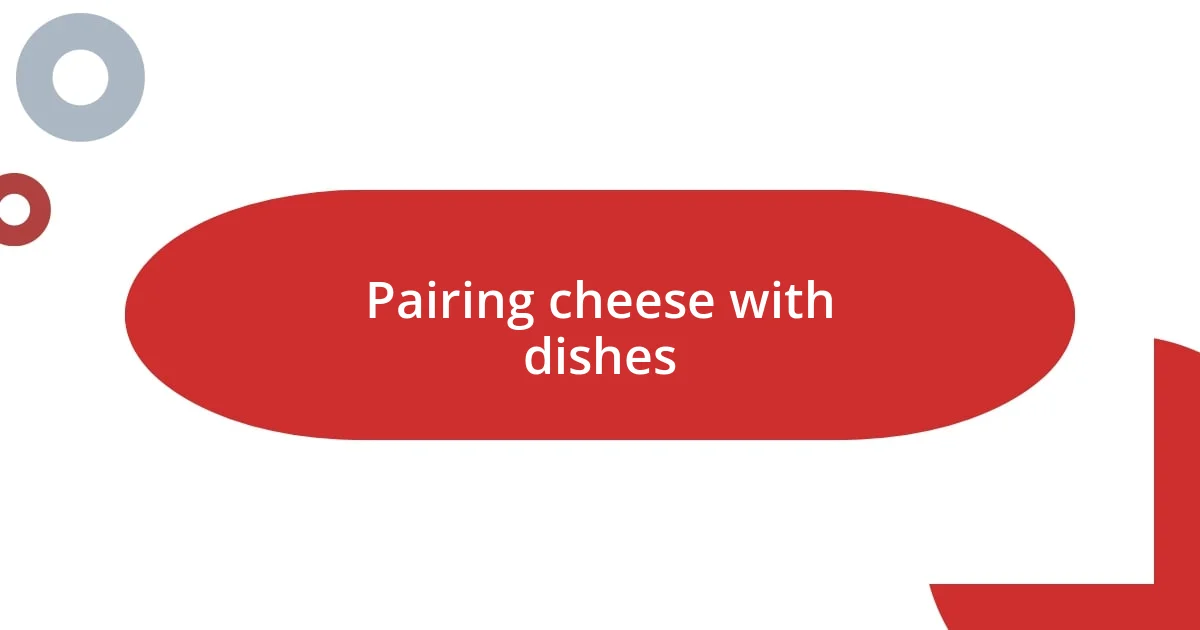
Pairing cheese with dishes
Pairing cheese with food can truly elevate a meal, transforming it from ordinary to extraordinary. I remember the first time I matched a creamy Brie with a tart apple compote. It was as if the flavors were dancing together, bringing out the best in each other. Have you ever experienced that perfect bite, where every element complements the next?
Another delightful pairing I’ve enjoyed is aged Gouda with a robust red wine. The savory, nutty notes of the cheese blend seamlessly with the wine’s bold flavors, creating a harmonious balance that lingers on the palate. I can still recall a gathering with my family where we sampled these pairings, eliciting laughter and joy with each new bite. It’s interesting how these simple combinations can evoke such vivid memories, isn’t it?
I often explore unique pairings, like blue cheese crumbled over a fresh pear salad. The sweetness of the pear cuts through the cheese’s strong flavor, creating an unforgettable taste sensation. It’s amazing how cheese can enhance not just flavors but also relationships—those shared moments over a cheese platter become treasured memories. What cheese do you think could transform a dish for you? Please share your thoughts.
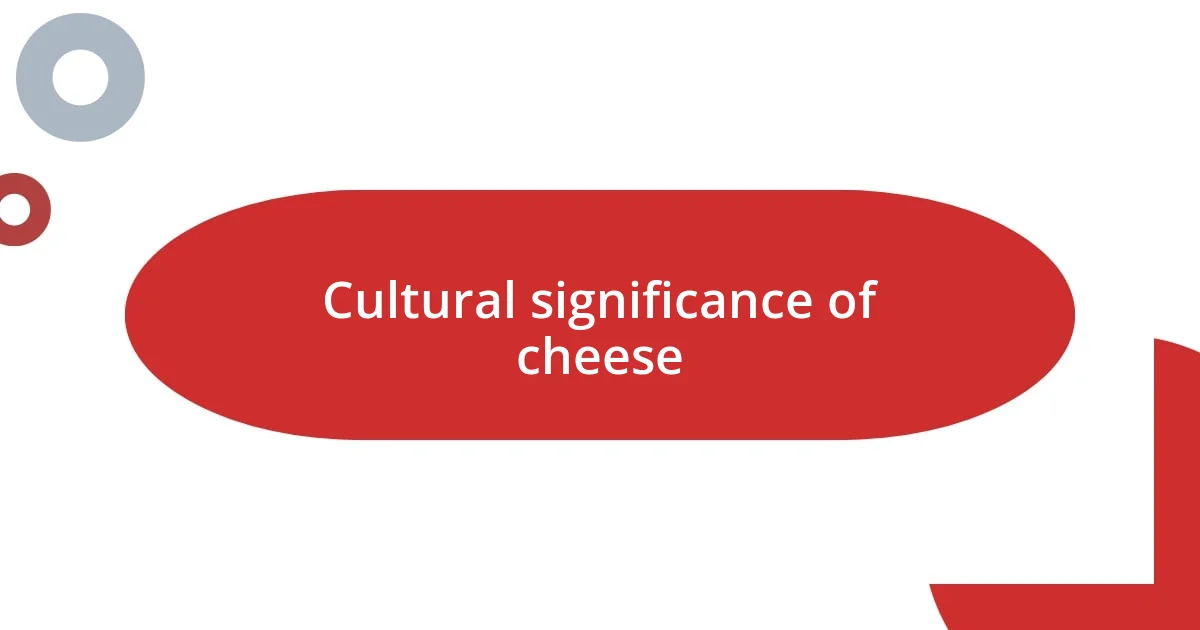
Cultural significance of cheese
The cultural significance of cheese is fascinating and deeply intertwined with family traditions and communal experiences. I remember my grandmother’s kitchen filled with the rich aromas of her homemade cheese, a ritual that brought our family together. Each batch carried a piece of our heritage, sparking conversations and laughter that echoed through the walls. Have you ever felt the warmth of shared culinary traditions?
In many cultures, cheese symbolizes hospitality and celebration. I recall attending a family wedding where the cheese course was a centerpiece, surrounded by various regional cheeses representing our family’s roots. Each slice told a story, fostering connections between generations. It’s intriguing how food can be a bridge that connects us, isn’t it?
Cheese also plays a role in festive gatherings, often marking special occasions with its diverse flavors and textures. I still cherish the memory of a winter holiday when we created a cheese fondue, dipping crusty bread as we shared stories around the table. That melted delight was more than just a dish; it was a blend of culture, connection, and warmth. How do you think cheese elevates your cherished moments?
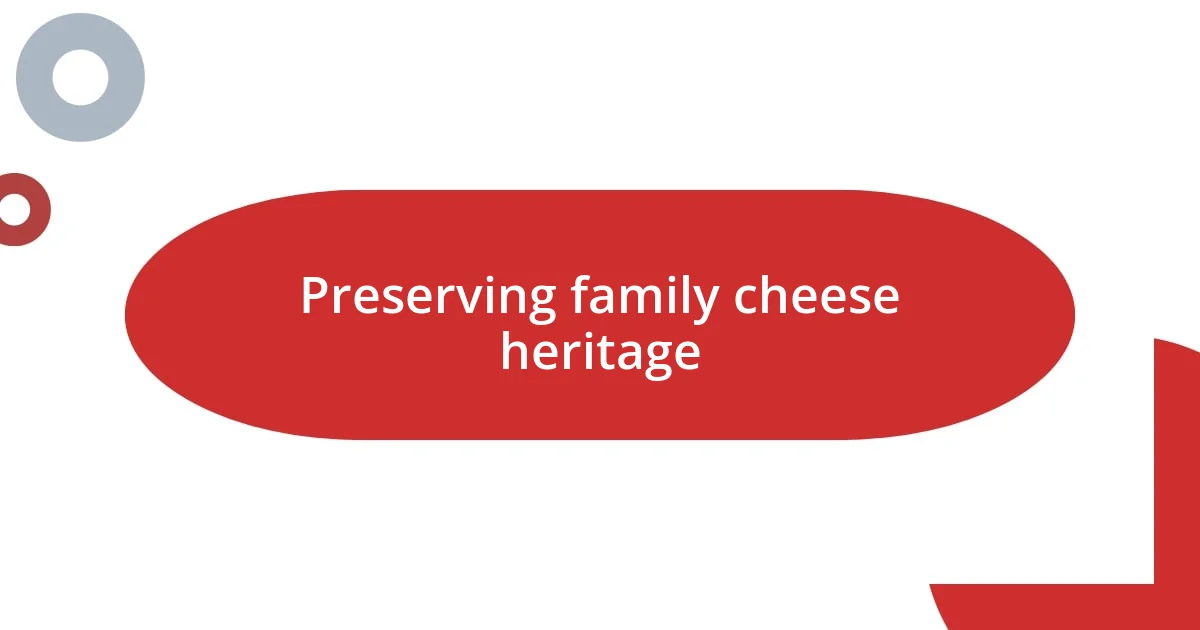
Preserving family cheese heritage
Preserving family cheese heritage is an endeavor that goes beyond just making cheese; it’s about safeguarding memories and traditions. I can clearly remember my father teaching me the age-old techniques he learned from his mother, emphasizing the importance of using quality milk and letting the cheese age just right. Each step in the process marked a moment in our family history, almost like a secret recipe passed down through generations. Have you ever felt that sense of weight when you realize you’re holding onto something meaningful?
The stories behind our family recipes breathe life into the cheese we make. Each little detail, like my grandmother’s choice to incorporate herbs from her garden, adds a layer of nostalgia and connection to the land. I often find myself smiling when I see similar varieties sprouting in my own backyard. It makes me wonder—what unique touches do you incorporate in your food traditions that tie you back to your roots?
In today’s fast-paced world, ensuring that our cheese-making traditions endure feels more important than ever. I’ve joined local cheese-making workshops, not only to refine my craft but also to gather with likeminded enthusiasts passionate about preserving these culinary legacies. The joy of sharing techniques and stories, while nibbling on cheeses crafted from family recipes, reinforces my belief that this heritage is worth protecting. What traditions do you think deserve to be celebrated and preserved in your family?








